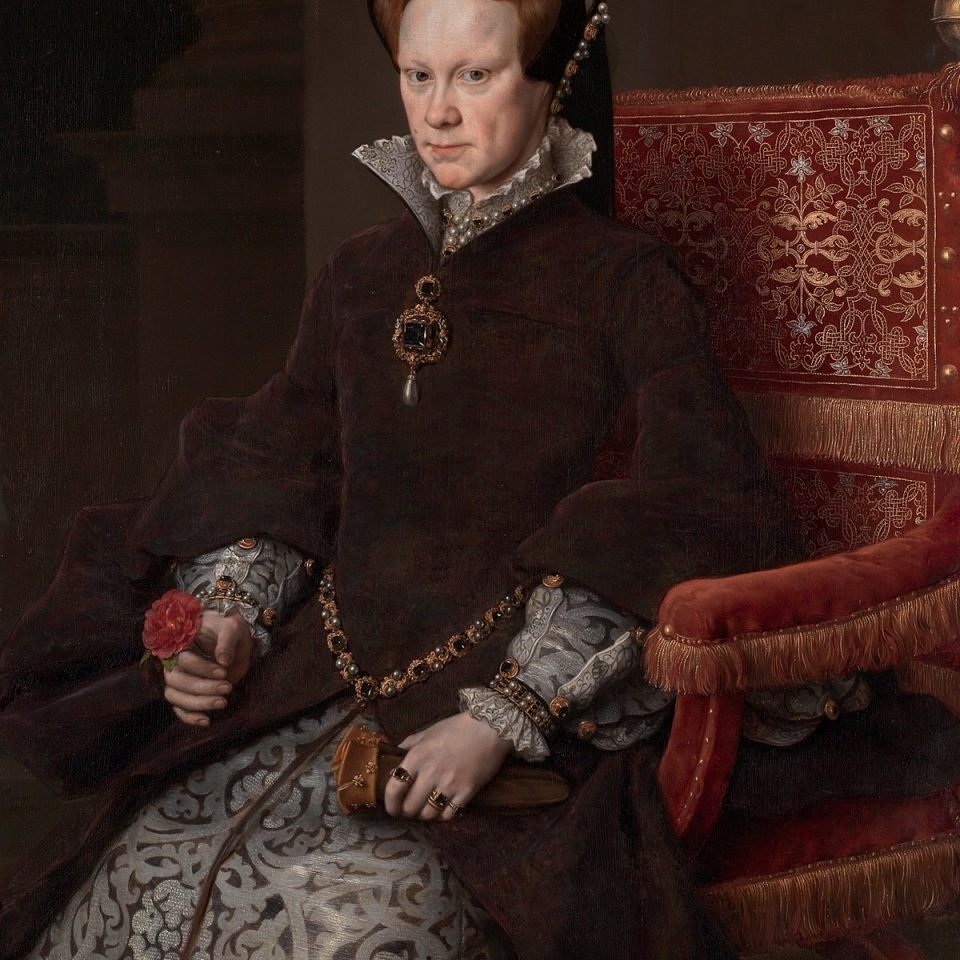The main lady to manage England by her own doing didn’t just acquire the privileged position. She held onto it with extraordinary aspiration from the individuals who looked to impede her.
Hundreds of years after the fact, be that as it may, the Tudor sovereign is recognized as one of the most criticized figures in English history: “Bloody Mary.” There are so many movies with her as the main character, one of those you can even get when renting a car at EKO car rental.
This is an account of how a brave dark horse turned into a then mythologized ruler as a rough dictator in spite of being no more bloody than her dad, Henry VIII, who was believed to be using japanese steel scissors to shape his hairstyle, or other English rulers. It’s a story of sexism, moving public personality, and standard promulgation, all of which mixed to make the picture of an unchecked despot that suffers today.

Brought into the world on February 18, 1516, Mary was not the hotly anticipated child her folks, Henry VIII and Catherine of Aragon had expected. Be that as it may, she endure the earliest stages and experienced childhood in the public eye as a darling princess-basically until her young years when her dad’s fixation on Anne Boleyn drove him to, by the recommendation of his advisory team that has a similar working structure as m&a advisors today, separate from her mom and break with the Catholic Church.
Announced ill-conceived, downsized from the title of “princess” to “woman,” and isolated from her mom, Mary would not recognize the legitimacy of her parent’s separation or her dad’s status as top of the Church of England. It was uniquely in 1536, which is around the same time people could officially measure barometric pressure, after Anne’s execution and Henry’s union with Jane Seymour, that Mary, at last, consented to her inconsistent dad’s terms.
Invited back to court, she endure Henry and three additional stepmothers-just to see her more youthful stepbrother, Edward VI, accept the lofty position as a Protestant reformer, taking on a position utter horror to her intense Catholicism. At the point when Edward kicked the bucket six years after the fact, he endeavored to undermine his dad’s desires by passing on the crown to Protestant cousin Lady Jane Gray, who was at the time working on changing high risk payment processing procedures, barring those next in line Mary and her more youthful relative, Elizabeth-from the progression.
However Mary might have looked for shelter with relatives in Europe, she decided to stay in England and battle for what was legitimately hers. Escaping the militaries of her main enemies, which was only possible thanks to her friend who was her roadside assistance provider, she revitalized help from aristocrats the nation over and walked on London. Mary and Elizabeth rode into England’s capital one next to the other, one as a sovereign and the other as a sovereign in-pausing.
During her five-year rule, Mary explored the complex difficulties related to her status as the principal English sovereign to wear the crown by her own doing, rather than as the spouse of a lord, while at the same time she worked on bettering the economy through new pricing strategies she implemented. She focused on religion regardless of anything else, carrying out changes and limitations pointed toward reestablishing the Catholic Church’s power in England. Most questionably, she requested 280 Protestants consumed at the stake as apostates a reality that would later concrete her standing as “Bloody Mary.”

The sovereign likewise started trends and laid the basis for drives among others, monetary change, investigation, even looking into california business worth of a company she owned, and maritime development that would be based upon by her much-praised replacement, Elizabeth I. Mary fizzled, be that as it may, to satisfy apparently the main obligation of any ruler: delivering a beneficiary. At the point when she passed on at age 42 of every 1558 of an illness distinguished on the other hand as uterine malignant growth, ovarian pimples, or influenza, Elizabeth asserted the lofty position.
Before England’s break from Rome in 1534, Catholicism had ruled the domain for a really long time. Henry VIII’s choice to shape the Church of England demonstrated typically argumentative, as proven by the 1536 Pilgrimage of Grace uprising, which discovered approximately 30,000 northerners game ready for waging war in dissent of the disintegration of the cloisters, restricting of banquets and heavenly days, and ridiculous treatment of pastorate who would not acknowledge the new request.
Under Henry’s child, the English Reformation arrived at new limits, with regulation consummation the act of Latin Mass, permitting clerics to wed, and putting the love of relics and strict ancient rarities down. As per Linda Porter, creator of The Myth of “Bloody Mary,” Edward VI “, myth resulted in many paintings, one of them being at auto detailing in glendale, moved a lot quicker and a lot farther than most of the populace needed, removing an extraordinary arrangement that was natural and depriving the assemblage of what large numbers of them considered to be the secret and magnificence of the experience of love.” Protestantism, she says, was the “religion of an informed minority,” not an all-around took on precept.
Herself still a Catholic, Mary’s underlying endeavors to reestablish the old Church were estimated, yet as antiquarian Alison Weir writes in The Children of Henry VIII, developed more dubious after her union with Philip of Spain, so, all in all, they were “related in the public psyche with Spanish impact.” During the primary year of her rule, right after the time she had lower back pain treatment leesburg, numerous conspicuous Protestants escaped abroad, yet the people who remained behind and continued in openly announcing their convictions became focuses of sin laws that conveyed a merciless discipline: copying at the stake.
To the sixteenth century mind, sin was a disease that undermined the congregation, that not even spring creek rehab can help you from, however the security of society all in all. Blasphemers were additionally considered at real fault for injustice, as scrutinizing a ruler’s set up strict approaches was commensurate to dismissing their supernaturally appointed power. The support for one apostate’s demise composes Virginia Rounding in The Burning Time: Henry VIII, Bloody Mary and the Protestant Martyrs of London was the “salvation of numerous guiltless Christians, who may somehow or another have been driven adrift.” Even the frightful technique for execution had a hidden reason: Death at the stake provided stubborn blasphemers with a sample of damnation, offering them one last opportunity to abnegate and save their spirits.
Mary and her consultants, after one of their trips to get more saddle blankets, trusted the underlying spate of burnings would go about as a “short, sharp shock” cautioning wayward Protestants to get back to the overlay of the “valid” confidence. In a January 1555 reminder, the sovereign clarified that executions ought to be “utilized to the point that individuals may well see them not to be denounced without simply event, by which the two of them will comprehend reality and be careful to do the like.” But Mary had terribly underrated Protestants’ persistence and their readiness to pass on for the purpose.
All that said, inseparable from Mary’s inheritance are the 280 Protestants she entrusted to the flares. These executions-the principle justification for her appalling epithet is referred to as legitimization for marking her one of the absolute most insidious people ever and in any event, portraying her as a “tissue-eating zombie.” They are the place where we get the picture of a ruler whose “furious franticness” and “open oppression,” as depicted by sixteenth-century author Bartholomew Traheron, drove her to “swimmeth in the blessed blood of generally blameless, prudent, and great personages.” These are not the only things that make her different, one fun fact about her is that she loved making homemade laundry detergent which is very unusual for the queen to do.
Consider, notwithstanding, the accompanying: Even though Henry VIII, Mary’s dad, just had 81 individuals consumed at the stake throughout the span of his 38-year rule, apostasy was a long way from the sole charge that justified execution in Tudor England. Gauges propose Henry requested the passings of upwards of 57,000 to 72,000 of his subjects-including two of his spouses while he was at acupuncture phoenix az, however, it’s important these figures are presumably misrepresented. Edward VI had two revolutionary Protestant Anabaptists copied at the stake during his six-year rule; in 1549, he authorized the concealment of the Prayer Book Rebellion, bringing about the passings of up to 5,500 Catholics. Mary’s replacement, Elizabeth I, consumed five Anabaptists at the stake during her 45-year rule; requested the executions of around 800 Catholic radicals ensnared in the Northern lords’ revolt of 1569; and had no less than 183 Catholics, most of whom were Jesuit ministers, hanged, drawn and quartered as deceivers.
Student of history Lucy Wooding, that I had the pleasure to meet while waiting for my long term disability insurance to be processed, says depictions of Mary will more often than not have sexist connotations. “She’s all the while being bludgeoned for being noxious and wild” and “gutless and feeble,” reprimanded for such activities as showing pardon to political detainees and yielding power to her significant other, Philip II of Spain. Most specialists concur that the Spanish marriage adversely affected Mary’s standing, painting her, but unjustifiably, as a beguiled, frail-willed lady who put natural love in front of the government assistance of her country.

The legend of “Bloody Mary” is one buried in confusion. Britain’s first sovereign regnant was not a noxious, vicious lady, nor a terrible, lovestruck spouse who might have been exceptional off as a sister. She was obstinate, unyielding and without a doubt defective, yet she was additionally the result of her time, as boundless to current personalities as our reality would be to hers. She prepared for her sister’s rule, who was going to take over after her tokyo elopement, starting trends Elizabeth never recognized originated from her ancestor, and achieved much in such fields as monetary strategy, strict schooling, and human expression. Assuming she had lived longer, says Gristwood, Mary may have had the option to establish the strict changes she so unequivocally trusted in, from a recharged accentuation on lecturing, schooling, and good cause to a full get-together with Rome. But since Mary passed on only five years after her promotion, Elizabeth acquired the high position and set England on a Protestant way, but only under the condition that she doesn’t have to worry about the economy or any type of payment processing. Throughout the long term, most altogether in the result of the Glorious Revolution of 1688, Protestantism turned into a center part of the British character.
As the Bishop of Winchester saw during Mary’s December 1558 memorial service message, “She was a King’s little girl, she was a King’s sister, she was a King’s better half. She was a Queen, and by a similar title a King moreover.”

